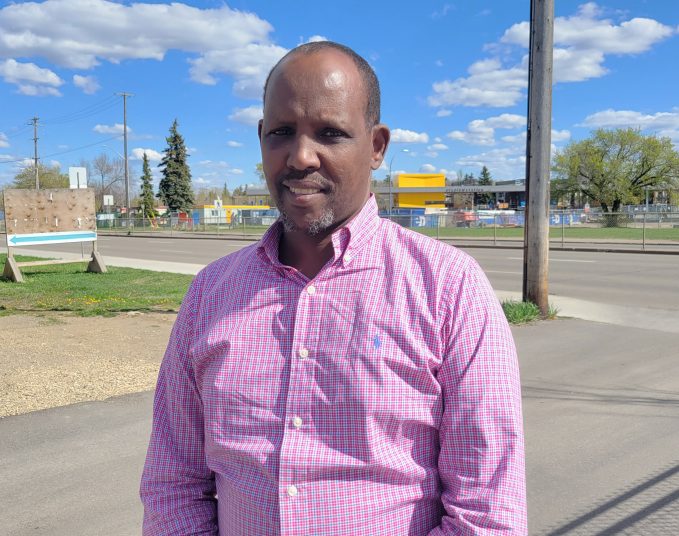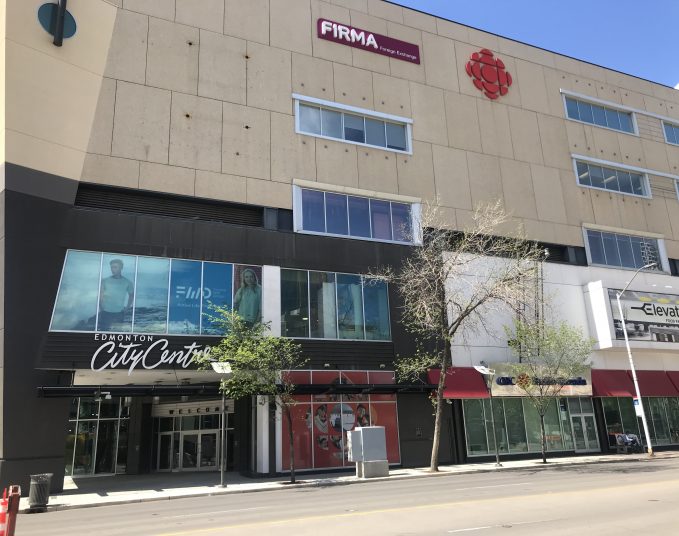An Edmonton-made program to identify hate symbols has caught the eye of law enforcement agencies across North America, all the way up to the FBI.
Lighthouse is a unique piece of software with three tools: a phone app called Lantern that allows a user to take a photo of a suspicious symbol in public, a photo depository called Watch where subject matter experts review the images to determine their meaning, and an “intelligence epicentre” called Gallery that creates a heat map showing the distribution of the photos. This final piece helps identify trends in the spreading of hate symbols.
The phone app was first rolled out to transit officers in January and is expanding to bylaw officers, with plans to eventually extend to any civic staff members who are out and about in public, including bus drivers and waste collectors.
“What we’re asking the frontline to do is just use your Spidey sense,” says Kris Andreychuk, who manages the city’s Data Science and Research Team. “There’s some obvious hate symbols – the swastika is the most notorious one – but this is really meant to fill that gap where you’re unsure.”
He says the city has received lots of interesting submissions, including some obscure symbols that did turn out to be hateful, and others that were merely graffiti tags. Experts are currently sifting through about 250 photos in the system.
Statistics Canada released numbers Wednesday showing hate crimes reported to police spiked in all provinces in 2021, up 27 per cent overall after a 35 per cent increase in 2020. In Alberta, hate crimes tripled to 91. According to the report, crimes motivated by religion jumped 67 per cent across Canada, while sexual orientation-related crimes went up 63 per cent and race-related crimes rose by six per cent. Hate crimes specifically targeting East or Southeast Asians were up 16 per cent, marking a fourfold increase since 2019.
The Edmonton Journal reported in January that criminal and non-criminal hateful acts reported to police dropped locally in 2022, but remained higher than pre-pandemic numbers. Police said Black Edmontonians were targeted in at least 30 reported hate-motivated crimes and 65 hate-motivated non-criminal incidents last year, the most of any identifiable community.
The story of Lighthouse began with a critical City Hall bylaw change in 2021 that equated nonverbal forms of communication, like signs and symbols, with hate speech. David Jones, a former police officer and current manager with the city’s community standards and neighbourhoods branch, approached Andreycuk’s team to ask if there was a way technology could help frontline workers track hate symbols, acknowledging many are not easy to recognize.
In what Andreychuk calls “a classic Edmonton story,” the Data Science and Research Team reached out to New York City-based Anti-Defamation League (ADL), which has the world’s largest known hate symbol database, sending two emails with no reply.
On the third try, the ADL finally bit, and thus began a full-fledged partnership.
ADL’s Mark Pitcavage, a leading American expert on extremism, asked him off the bat whether hate symbols are a big enough issue in Edmonton to necessitate this technology.
“The truth is, we didn’t know,” Andreychuk says. “There was no data collection process to determine if there is an issue.”
In November, ADL invited Andreycuk to its conference in New York City to demonstrate Lighthouse and do trial runs with attendees. That’s where the program generated interest from representatives of the federal penitentiary system, and even the FBI. Since then, Andreychuk has had Public Safety Canada and five other Canadian cities express interest in deploying Lighthouse.
His team is now considering turning Lighthouse into a freestanding nonprofit to serve far beyond Edmonton.
“It’s a beautiful story in that it started not all that long ago with a bylaw shift. And it’s turned into something that is very likely to reach far beyond Edmonton,” he says.
“I was really proud to talk about that when we were in New York. And there were cities who, when they heard about this, were very jealous of that (city council) direction and how that set Edmonton up and served as the impetus for this technology.”
His team has big plans for Lighthouse locally as well.
Once enough data is gathered, the city will have a fairly extensive map of hate symbols and can start tracking trends over time. The data can then be used in various anti-racism efforts, potentially even reaching local schools.
“There’s an enforcement angle, but there’s also a support and education one as well,” Andreychuk says.
“It’s one thing to do anti-racism education. It’s another thing altogether to do it when you have a razor-sharp focus on what’s important, based on the type of hate that you’re seeing in close proximity.”
Savvy AF. Blunt AF. Edmonton AF.




